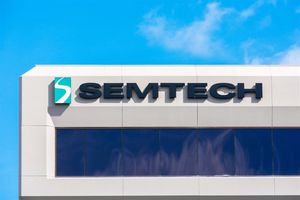Intel Eyes Foundry Sale: Is This the Solution to Its Stock Woes?

Intel (NASDAQ: INTC) has had a terrible 2024, to say the least. The company’s shares are down 61% year-to-date, driven largely by a massive earnings miss in August. Criticism has been laid on the company’s CEO, Patrick Gelsinger, who has failed to maintain Intel’s dominant position in the semiconductor space. Meanwhile, other chip designers like NVIDIA (NASDAQ: NVDA) have succeeded greatly, despite the recent turmoil in their share price.
This bad performance from Intel, whose shares are now hovering near their 10-year lows, has come with calls to oust Gelsinger. Now, it appears management is realizing how dire the situation is. Last week, reports stated that the company is now looking at options to sell or spin off part of its business. Let’s break down what is going on and how markets might react if this company shakeup occurs.
Intel Is Finally Bringing a Real Solution to the Table
Intel has taken steps recently to try to fix its situation, but they have felt more like band-aids than long-term solutions. In its latest earnings release, it announced it would be laying off 15,000 employees and suspending its dividend to increase cash. Now, it is exploring what many have hoped for: selling or spinning off its foundry business.
Intel is somewhat unique in the semiconductor industry, as it is an integrated device manufacturer (IDM). This means that it not only designs its chips but also manufactures them at its foundry. Although firms like Samsung (OTCMKTS: SSNLF) and Texas Instruments (NASDAQ: TXN) also use this model, it's not the standard.
Far more common is the separation of the design and manufacturing parts of the business. In this case, a fabless chip designer like NVIDIA would design the chips and then pay a manufacturer like Taiwan Semiconductor (NYSE: TSM) to produce them. One company doing both is a tall task, and one it seems Intel has been unable to handle. On the day of the news, shares jumped nearly 10%, showing positive sentiment around the idea.
Over the years, Intel has seen its vertical integration as a strength, but at its core, the firm is a chip design company. Its chip product revenue was nearly three times higher than its foundry revenue in the last quarter. The foundry revenue comes from the fact that the firm also manufactures chips for other design companies, not just itself.
Selling Its Foundry Could Narrow Intel’s Focus on What’s Most Important
Getting rid of the foundry would allow the firm to focus on its core design business, where it needs to succeed most to stay relevant. Even with 3% growth in the foundry business last quarter, it's still not performing up to the level of competitors. Taiwan Semiconductor saw its revenues increase by 42%.
With a semiconductor market fueled by data centers and AI, Intel has been seriously lagging. Last quarter, the company saw a 3% decline in this revenue stream compared to last year. At the same time, AMD (NASDAQ: AMD) saw revenue increase by 115% in this segment, and NVIDIA grew by 154% last quarter.
It appears Intel can make good chips for the data center and AI space, but they may be “a generation behind” those of firms like NVIDIA and AMD. Comparisons of the firms' Gaudi 3 chip show that it has less high-bandwidth memory and uses a less advanced process node technology than NVIDIA’s B200. This is leading to the company’s lag in growth.
Bank of America Securities analyst Vivek Arya sees the Gaudi 3 capturing “less than 1%” of the AI chip sector market share. Meanwhile, Intel plans to design superior chips to stay competitive.
A Breakup May Be Beneficial Long-Term, but Will It Happen?
The market reaction and sentiment from many experts seem to show that the breakup of Intel’s business would be positive. However, the news is just a week old, and whether this will actually happen is still very much up in the air.
The foundry business could have a shortage of potential buyers. The U.S. government regards chip manufacturing facilities as important to national security. It could impose roadblocks to prevent the sale of the business to foreign companies. This reduction in competition could lead to an uncompetitive selling price.
Additionally, the reaction hasn’t been all positive. According to MT Newswires, DA Davidson has reduced its price target on Intel to $21 since the news broke, implying an upside of just 8%.
More News
View More




Recent Quotes
View More
Quotes delayed at least 20 minutes.
By accessing this page, you agree to the Privacy Policy and Terms Of Service.